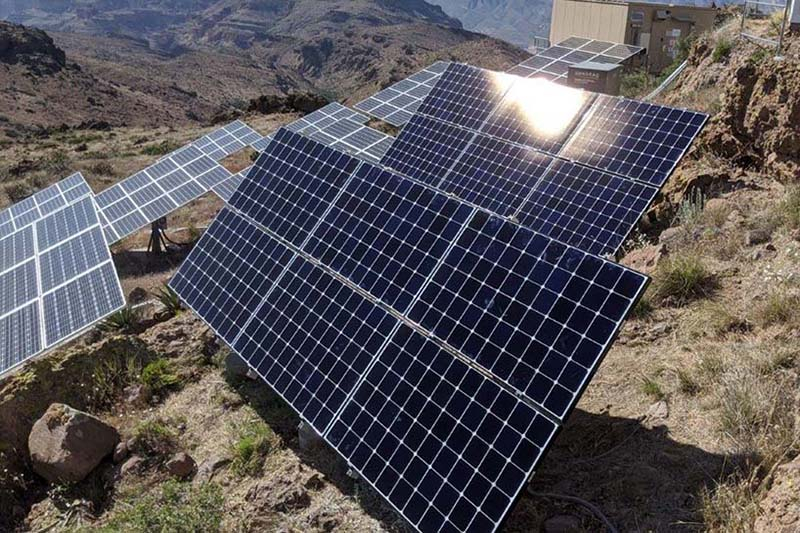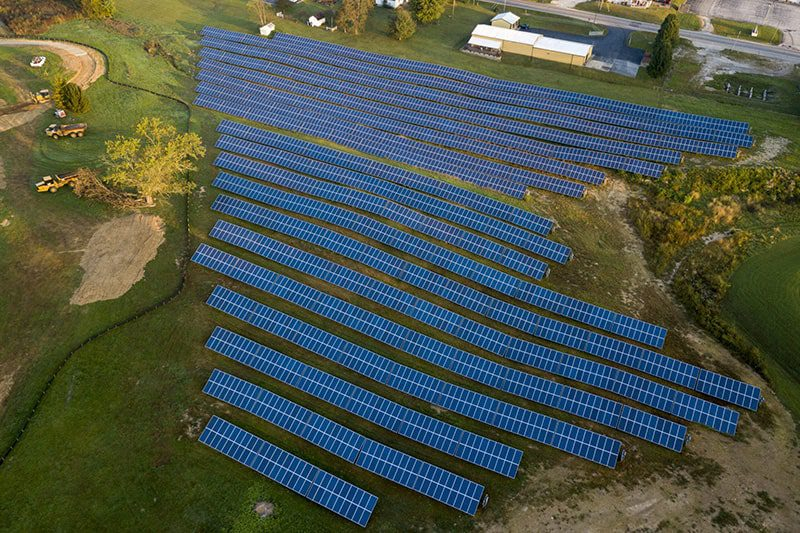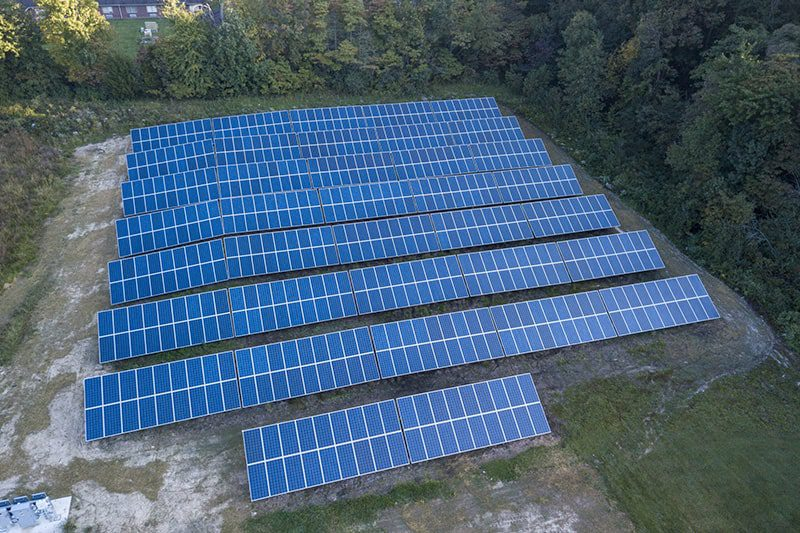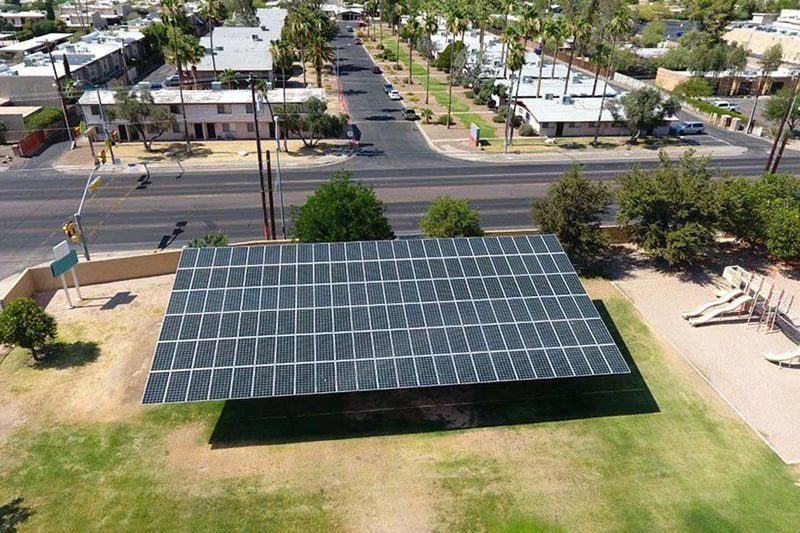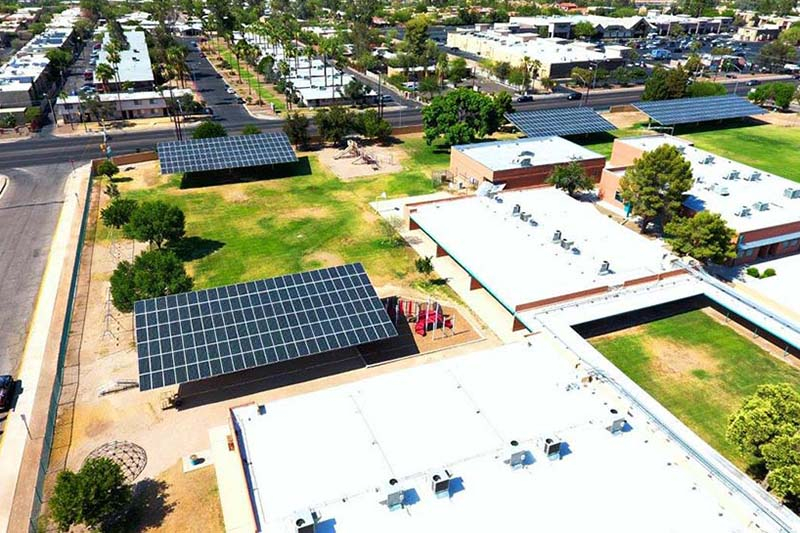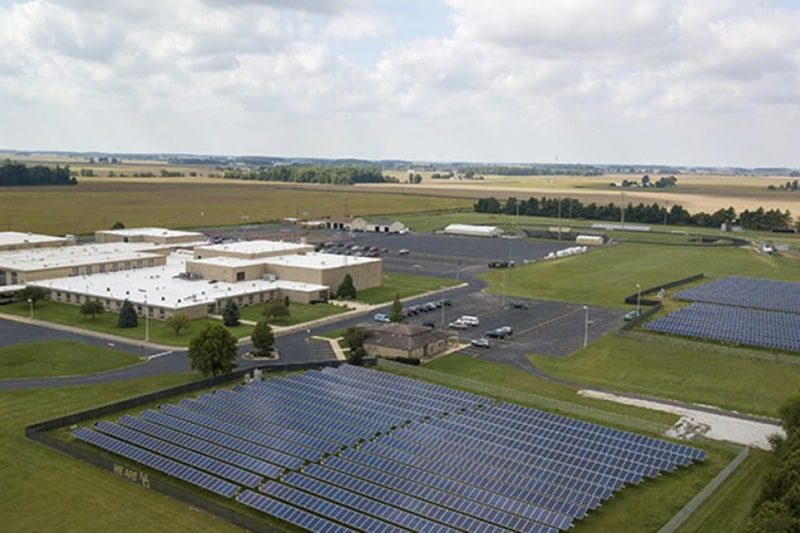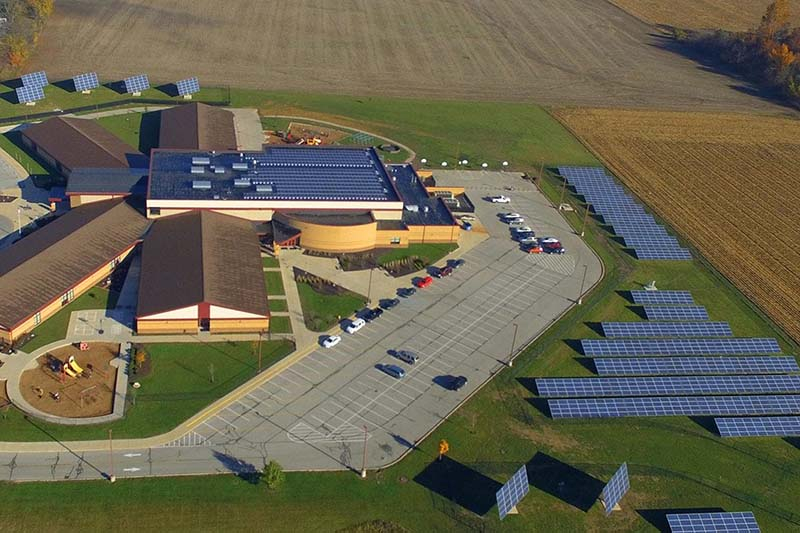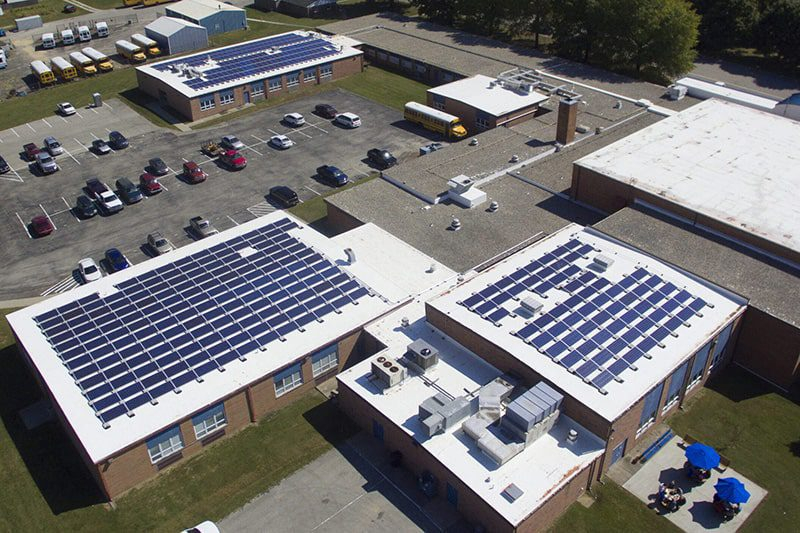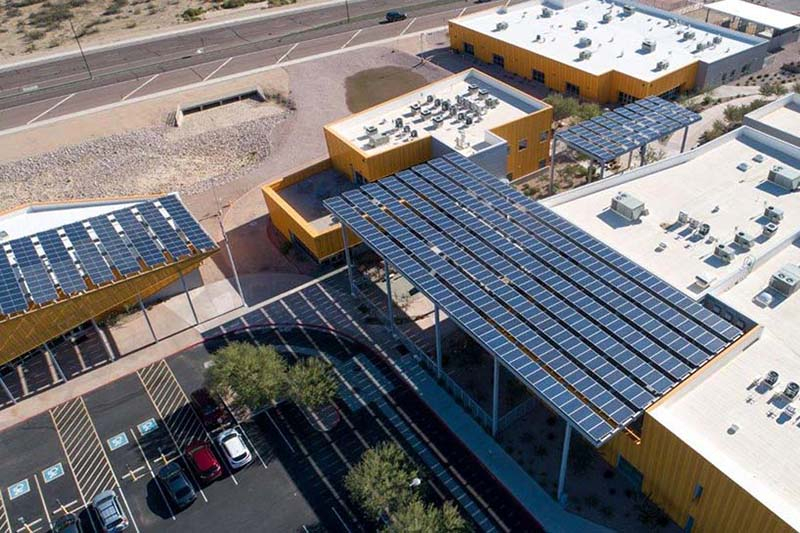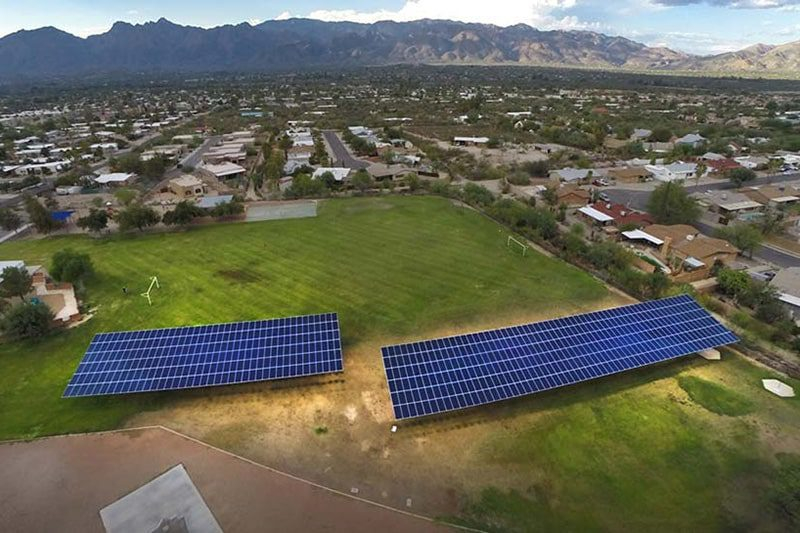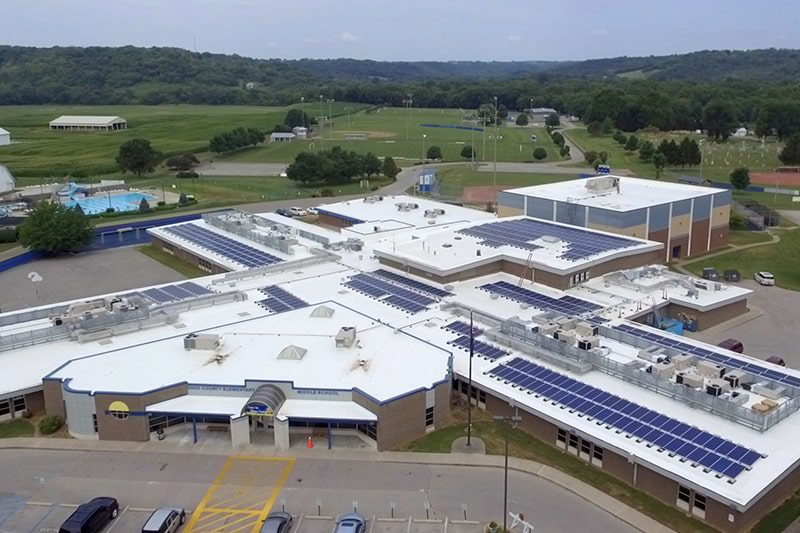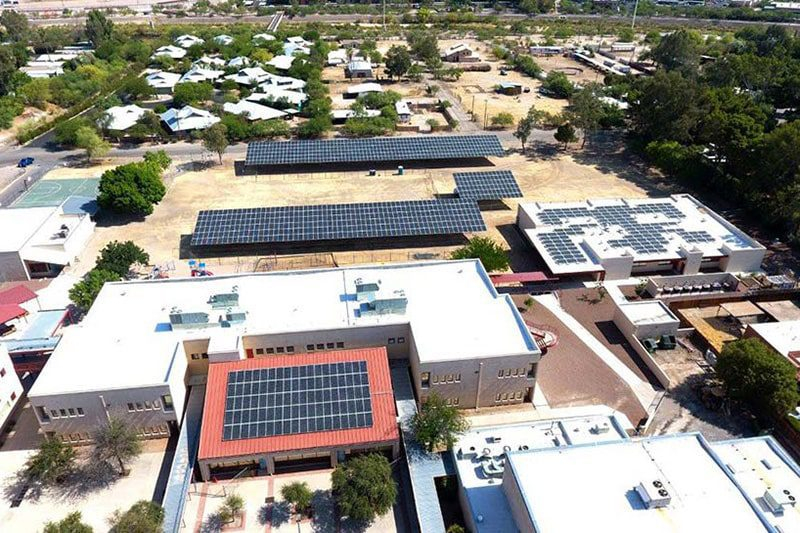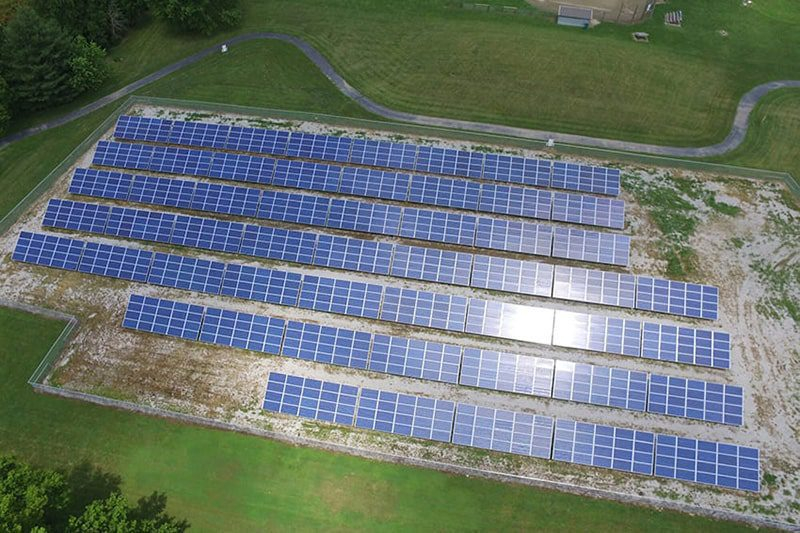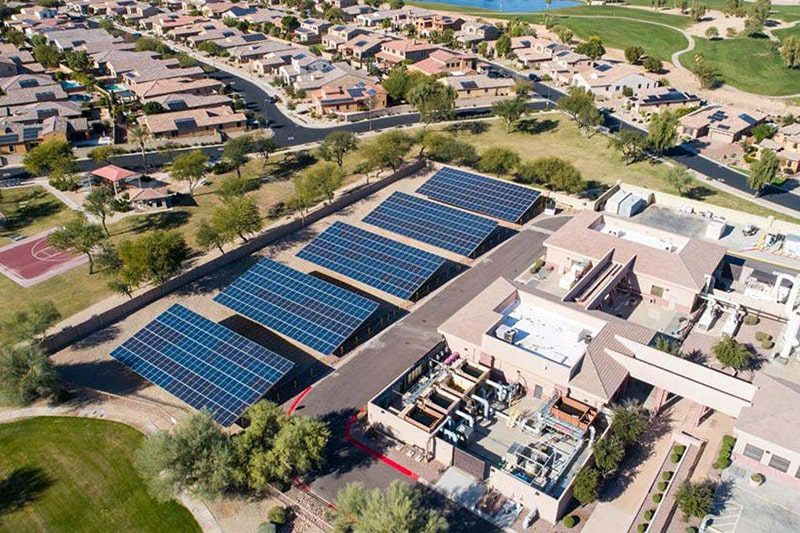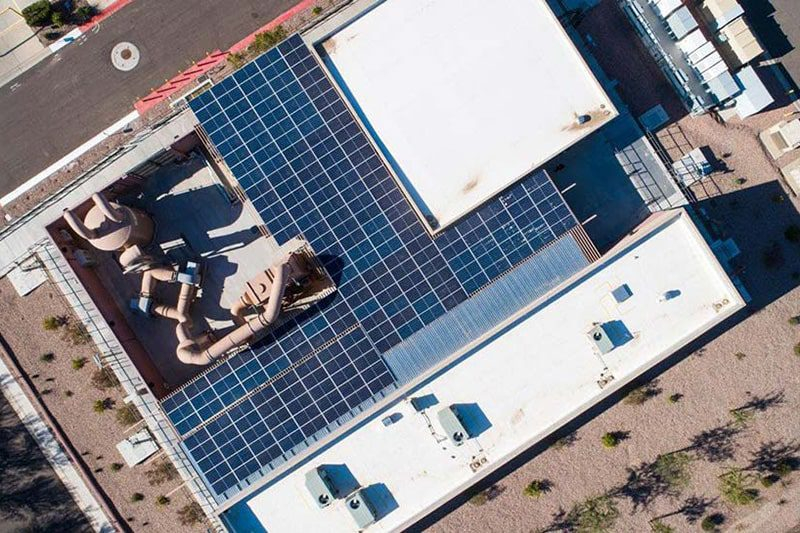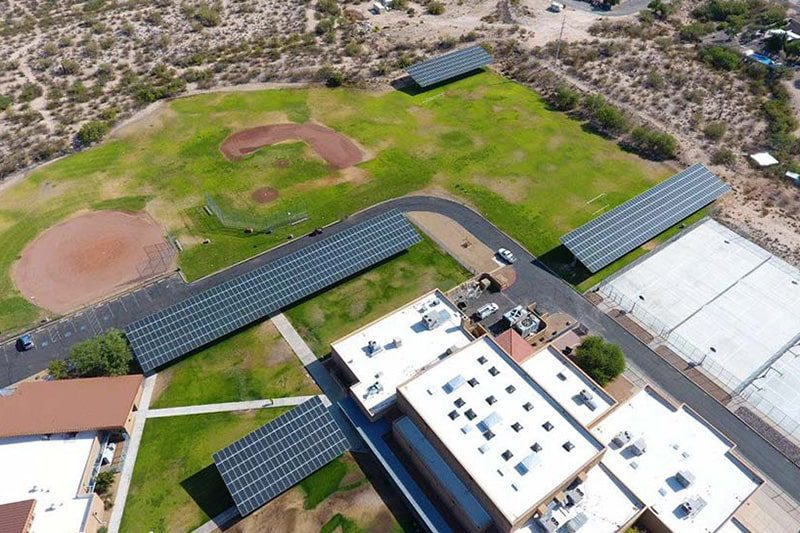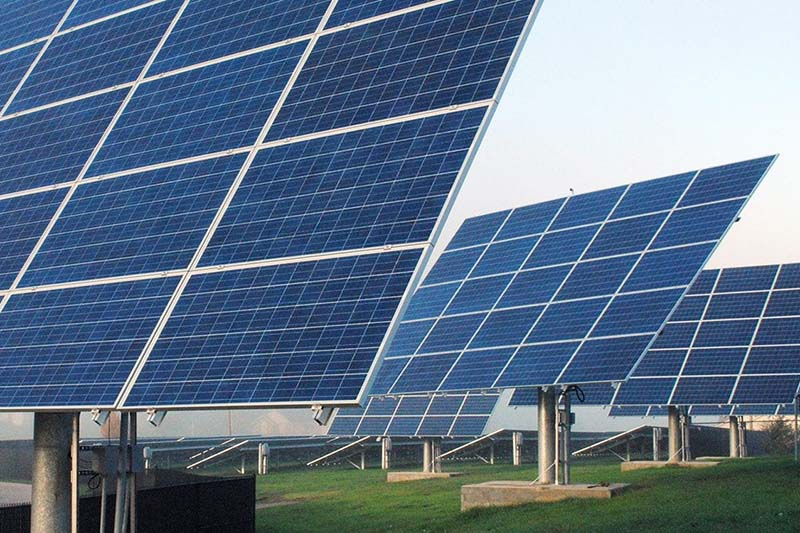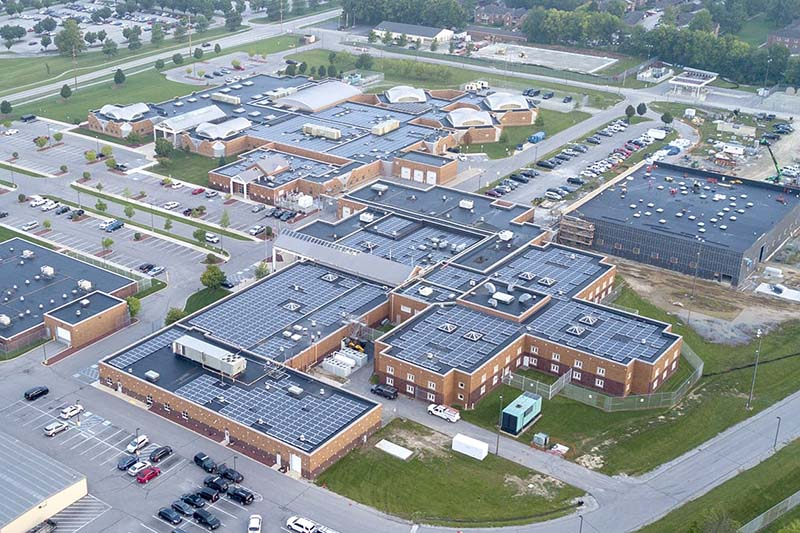![]()
Distributed & Renewable Energy
Advanced, Environmentally Friendly Systems Built and Maintained for Efficiency
Solar/Battery Storage
Advances in manufacturing and installation make solar photovoltaic systems a cost-effective way to reduce utility bills and commit to sustainability. Veregy has the in-house expertise to engineer, design, install, monitor, and maintain these systems, including battery storage.
Our approach maximizes lower monthly utility costs by reducing the amount of electricity clients must buy from the local electric company or cooperative. Solar installations can also help lock in lower utility rates and protect against rate hikes from traditional grid-supplied electricity.
Solar energy and schools complement each other well. Installing solar panels on schools creates ready-made, hands-on learning opportunities for the classroom, turning previously unused roofs or fields into scientific labs and inspiration for student art, writing, and other projects.
Benefits of solar
- Systems pay for themselves over time
- Allows you to produce your own energy allowing operators to offset demand and peak rates
- Insulate against energy price increases
- Reduce long term operating costs
- There are often tax incentives to further offset costs
- Clear energy source that furthers sustainability goals
- High reliability and low maintenance costs
The Sun Connection
The sun showers the Earth with more energy every minute than the human race uses in a year. By capturing a tiny portion of this energy, in the form of sunlight, electricity can be pulled from thin air. Depending on the time of year solar energy can provide a significant portion of a building energy needs reducing reliance on the grip and saving money on energy costs
Solar Equipment
Using state-of-the-art panels with long life-cycles solar installations can be placed on rooftops, carports, or any open areas around a facility. Once installed solar typically has low maintenance costs and the power generated can be used, put into the grid, or stored for later use.
Battery Storage
Our battery storage solutions provide a modern approach to demand response for facilities. Facilities are given the ability to shift load during peak periods and the ability to implement emergency response protocols. Outside of emergency response, the best value of our battery solutions is attained through charging when electricity is cheap and dissipating when electricity is expensive.
Veregy Solar Projects
Live Monitoring
Veregy offers live monitoring capabilities on solar and renewable energy installations. We take pride in ensuring systems are properly maintained, performing at peak abilities, and accurately reporting productivity. Live monitoring allows for a quicker response time if problems arise.
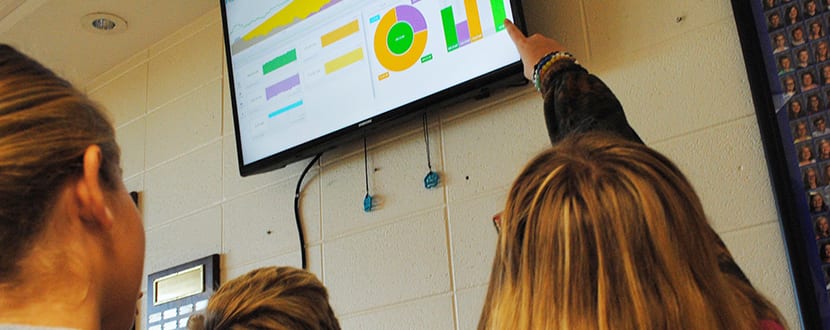
Microgrids
The traditional grid connects central power sources to homes, businesses, and other facilities, enabling people to use HVAC systems, electronics, appliances, and anything that “plugs in.” It powers most of our modern conveniences. The downside is that everyone feels the impact when the grid needs repair or goes down.
A microgrid – local energy grid that can disconnect from the traditional grid and run autonomously – solves the problem. It can operate while connected to the grid, but can also run on its own using local energy generation during storms, power outages, or emergencies. It can run on distributed generators, batteries, and/or renewable resources like solar panels. And depending on how it’s fueled and how requirements are managed, a microgrid might run indefinitely.
More than just a backup for the grid, a microgrid can also reduce energy costs or connect with local resources otherwise too small or unreliable for traditional grid use. This lets communities and facilities become more energy independent and environmentally friendly.
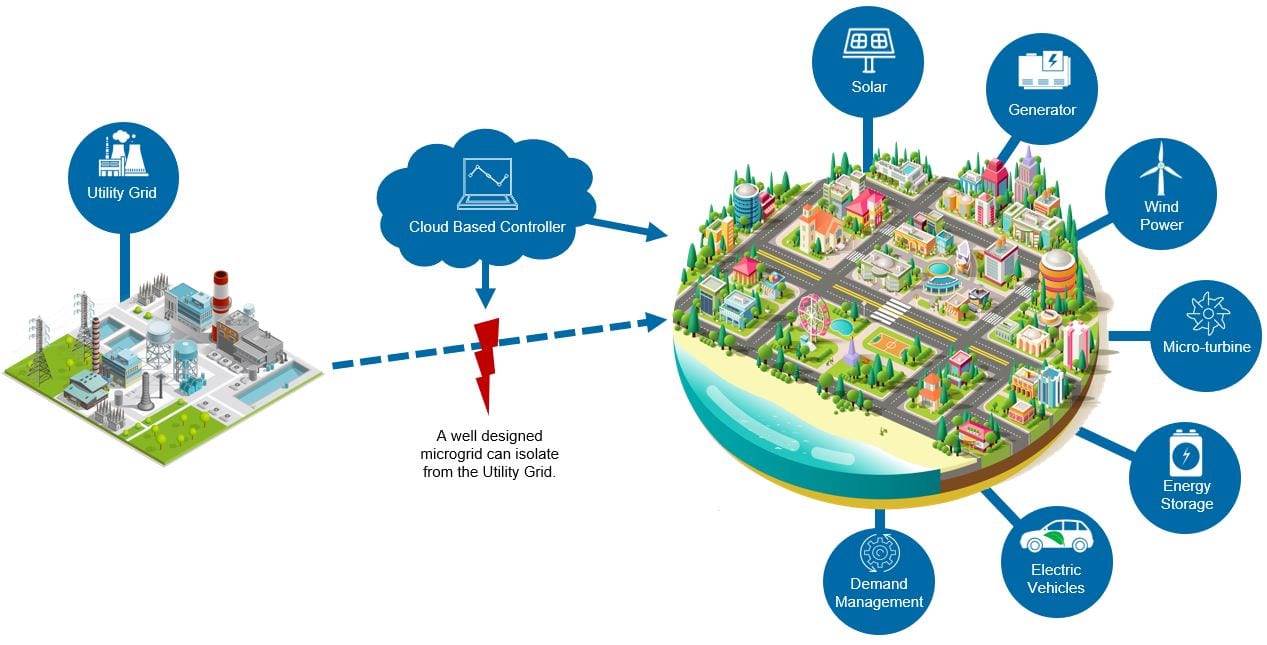
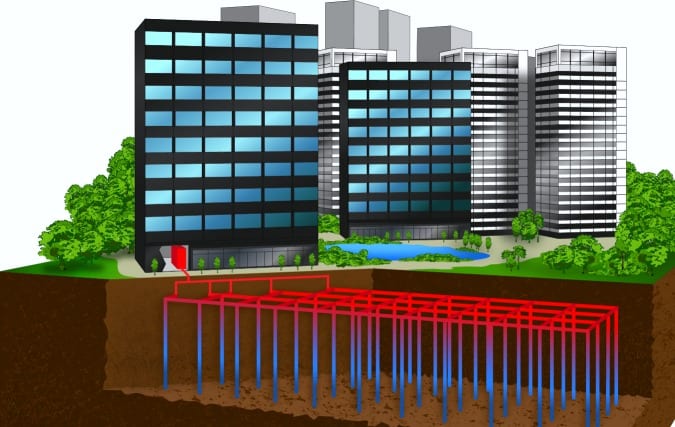
Geothermal
Geothermal or Ground Source Heat Pump (GSHP) systems are high-efficiency, renewable energy technology becoming more common in facilities that need space conditioning. They are a long-term strategy for heating and air conditioning buildings, creating quality environments with low operating costs. The systems are easy to maintain and have a long life.
Geothermal heat pumps use the naturally existing ground heat energy for space heating, space cooling, and hot water heating. The technology takes advantage of the earth’s natural insulative properties. Below the ground’s surface, temperatures remain relatively constant throughout the year. Underground is warmer than the air above it during winter and cooler in the summer. A geothermal heat pump transfers heat stored in the earth into a building during the winter and transfers it out of the building and back into the ground in summer.
GSHP systems have three main components:
An Earth Connection
A series of connected pipes buried horizontally or vertically in wells and manifolded together to make a “loop” that circulates water or a mixture of water and antifreeze. Depending on the season, these liquids absorb heat from or transfer heat to the surrounding soil.
Heat Pump Equipment
In the heating mode, a geothermal heat pump removes heat from the loop fluid in the earth connection, concentrates it using an onboard compressor, then transfers it to the building. For cooling, the process is reversed.
Air Distribution System
Conventional ductwork distributes heated or cooled air from the geothermal heat pump to the building spaces.
Efficiency of Geothermal
Geothermal systems cost more than other high-quality HVAC systems. However, when compared with traditional HVAC systems, such as a roof-top heating and cooling system, the energy and operational savings can offset the difference. These highly efficient systems will typically operate 40% to 70% less than conventional systems. It’s a maintenance savings of about 30% because there isn’t air-handling or central plant equipment to maintain, repair, and replace.
The benefits of a Geothermal system:
- Facilities operate in the top 10% of peer buildings.
- Energy use and fossil fuel consumption go down by 40%-70%.
- Peak electrical demand is reduced by eliminating the chiller loads.
- Occupants have space comfort control and can adjust the temperature of a single room. The heat pumps serving unoccupied areas can be turned off for another level of energy efficiency.
- Maintenance and repair costs go down by eliminating chiller systems and the air-cooled condensing equipment because there are fewer maintenance requirements.
- The heat pump units have a greater projected life of 25 to 30 years, far exceeding the service life of most conventional HVAC equipment, which reduces future repair and replacements.
Select your state to be taken to your regional service offerings.

